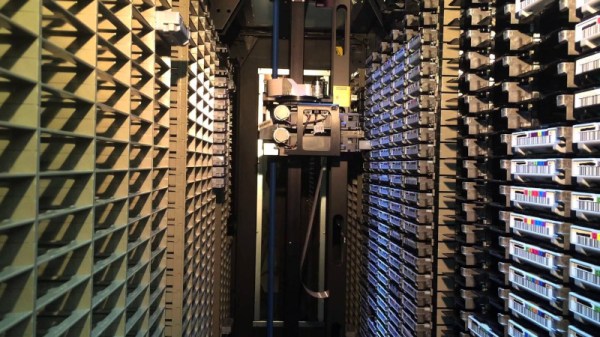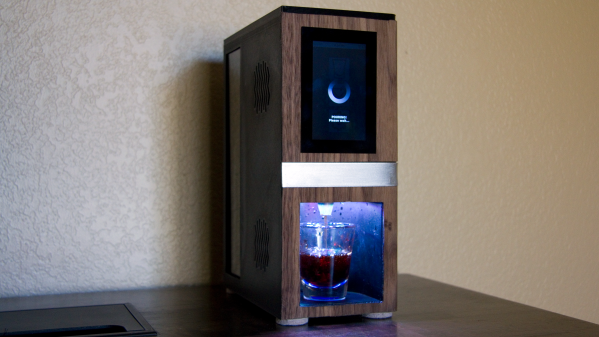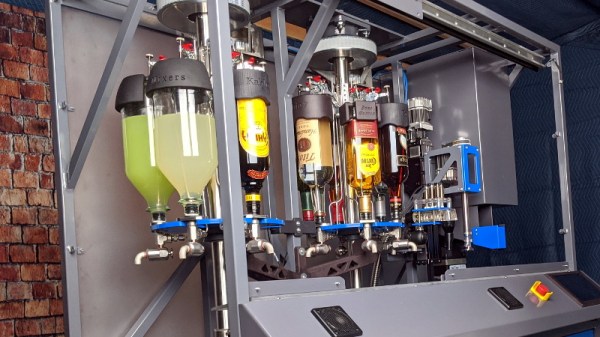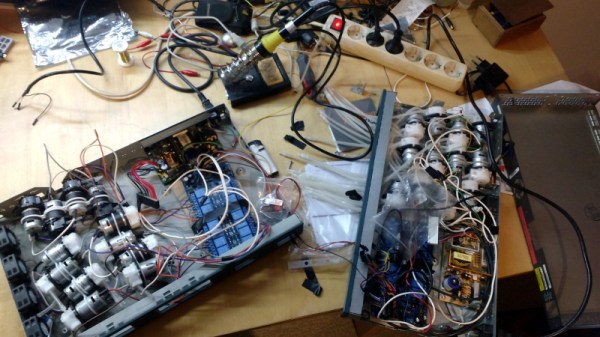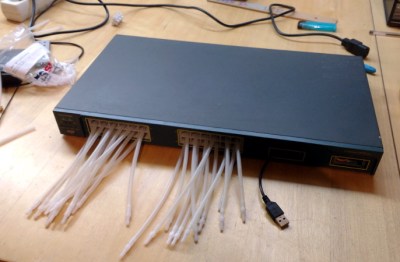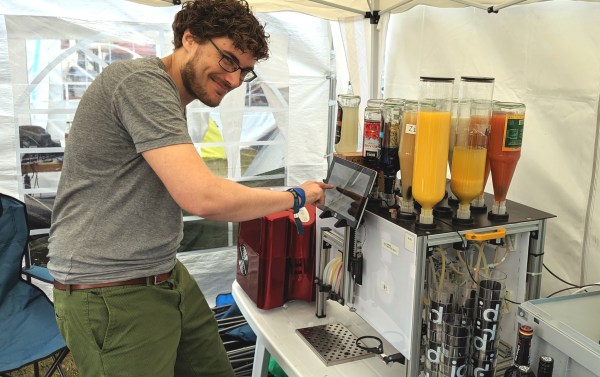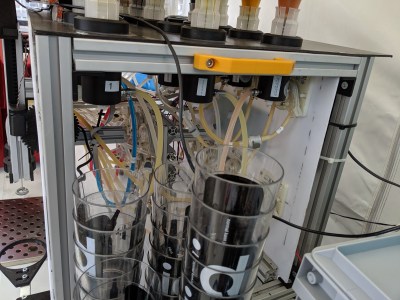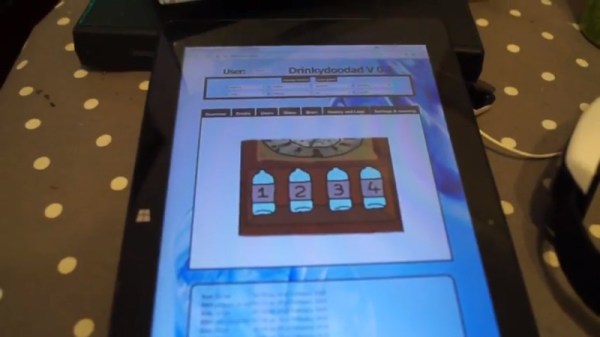Bar bots, or robotized bartenders, are a fun feature of events in our community, because there’s nothing like a cocktail untouched by human hand. Usually they have a row of bottles and a slide on which you put the glass, but [SecurityWriter] relates a tale of an altogether much grander affair. Given a weekend with a group of friends and an enterprise-grade IBM tape library robot, they did what any sensible engineer would do. They turned it into a bar bot.
Most readers probably won’t have seen a consumer grade data tape for decades, but in the enterprise space they’re very much the most cost effective backup solution. Large corporations have vast numbers of them, and IBM sells robots which retrieve them automatically from huge storage racks. When a group of young techs were given the tedious task of cataloging the whole thing and found themselves stuck in an empty data center for a weekend, of course they produced what was probably the world’s most expensive automated drinking game. Stocking the shelving system with booze and using the command line control for the robot they were able to have it deliver their beverages, and shockingly they managed to do so without the whole thing breaking.
It’s a hack, even if it’s one of which by necessity no evidence remains. Sadly Hackaday doesn’t have a tape library, or you can bet we’d be tempted to give it a try ourselves. Never mind, we can continue to sample more conventional bar bots from time to time.

